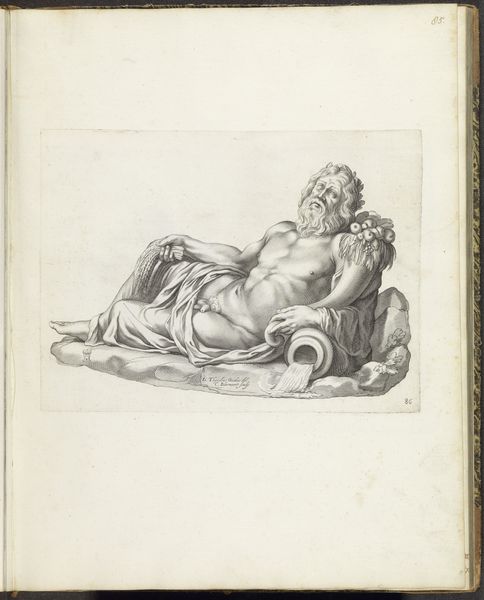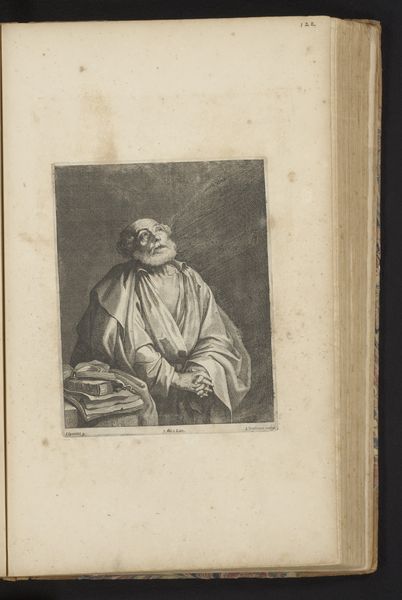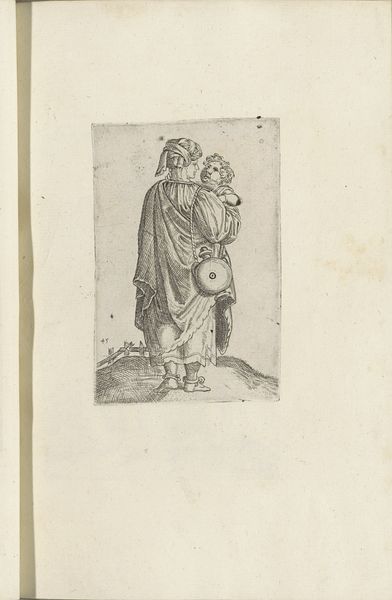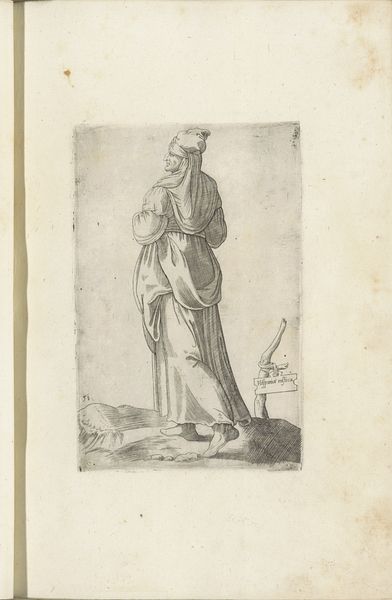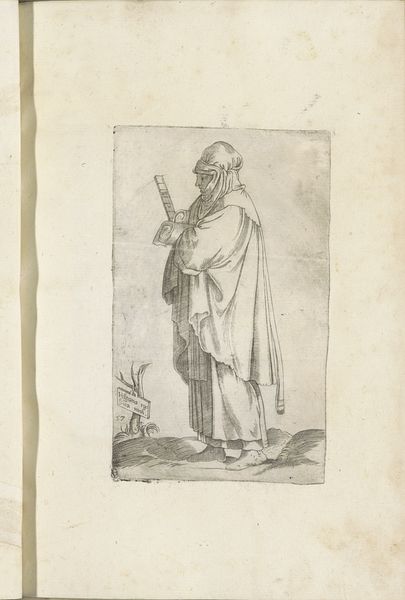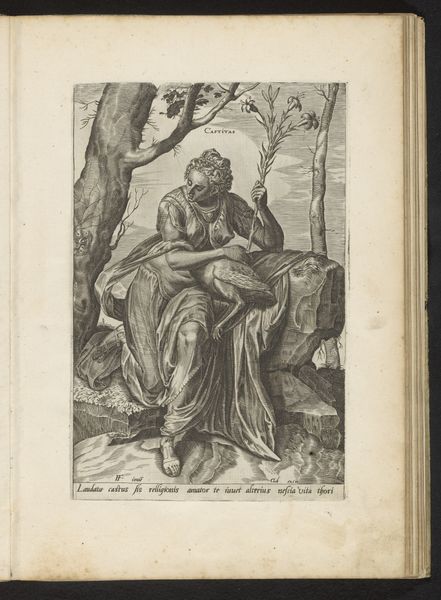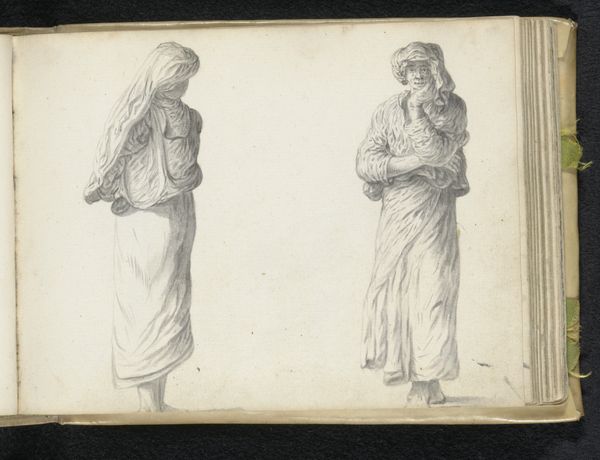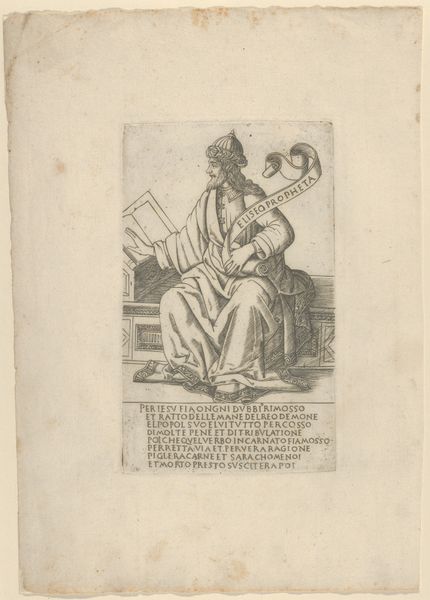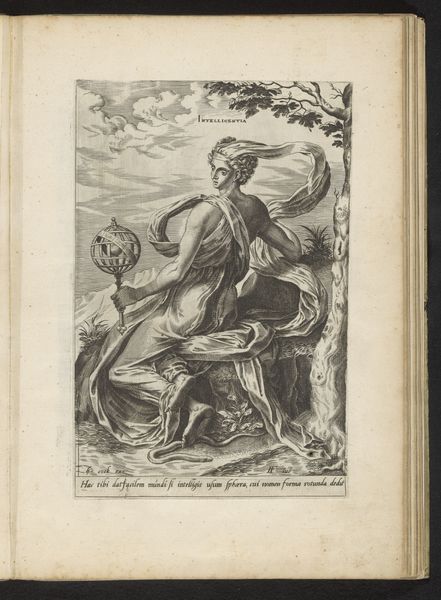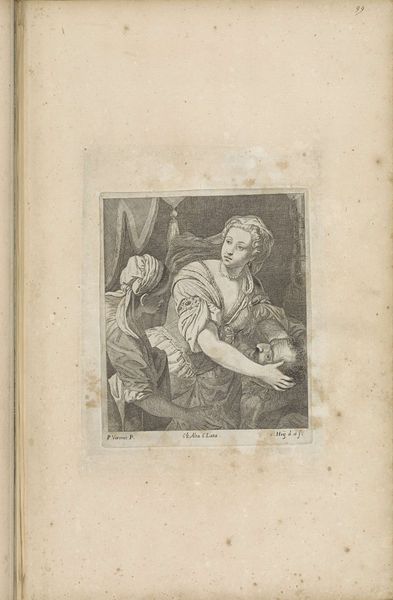
etching, engraving
#
portrait
#
toned paper
#
etching
#
figuration
#
portrait drawing
#
history-painting
#
academic-art
#
engraving
Dimensions: height 376 mm, width 235 mm
Copyright: Rijks Museum: Open Domain
Curator: The etching before us, crafted by Giovanni Luigi Valesio between 1636 and 1647, presents what is believed to be a statue of a seated man, potentially Diogenes himself. Editor: He looks so weary. Even in this delicate line work, you can sense the weight of his contemplation. The rendering of the drapery is exquisite. Curator: Absolutely. Consider Diogenes, the Cynic philosopher, who challenged societal norms and championed a life of virtue and simplicity. How does Valesio’s interpretation engage with the established iconography of this figure? We have to ask about what virtue and simplicity meant in the 17th century. Editor: His sandals, the simple robe... it all suggests a detachment from worldly possessions, doesn't it? Yet the muscularity hinted at—it's a visual echo of the heroic male nude in classical art. It's not mere deprivation. And that little object he holds; do we know what that could be? Curator: Possibly his iconic lamp, used in broad daylight to "seek an honest man". It reflects a disillusionment with societal values and the pursuit of authenticity, or the very male version of it. Editor: And the pose, the head resting heavily on his hand, it's become such an established symbol of melancholy and deep thought throughout Western art. But the statue is raised upon a kind of book-like plinth... why raise philosophy up in that way? Curator: Valesio is situating Diogenes within a complex framework of cultural memory, highlighting the enduring relevance of his philosophical inquiries. What does it mean that only powerful elites could engage with this sort of history-painting portrait? I would ask: how are different modes of gender and class at work here? Editor: The subtle tonal variations achieved through etching allow for such a nuanced portrayal. This image resonates deeply. He speaks volumes about intellectual inquiry, about being skeptical towards the systems we find ourselves within. Curator: A reminder that critical questioning and striving for justice have always been integral parts of the human narrative, a point no less potent now. Editor: Indeed, his critical lens echoes powerfully today, reminding us to question, to analyze, and to resist blind acceptance.
Comments
No comments
Be the first to comment and join the conversation on the ultimate creative platform.
